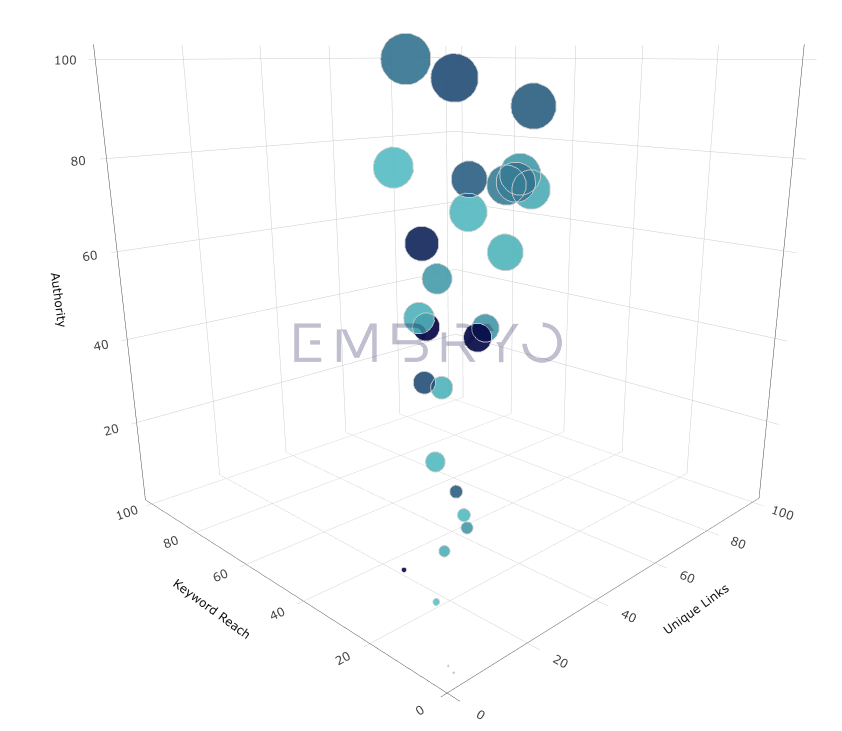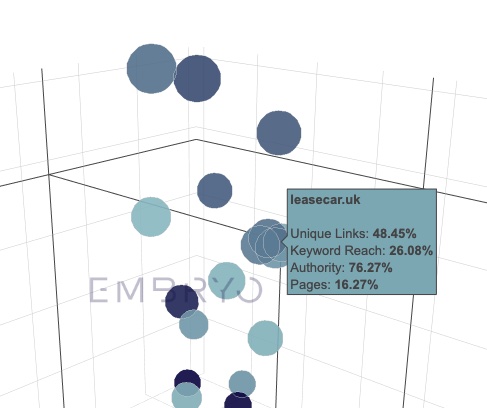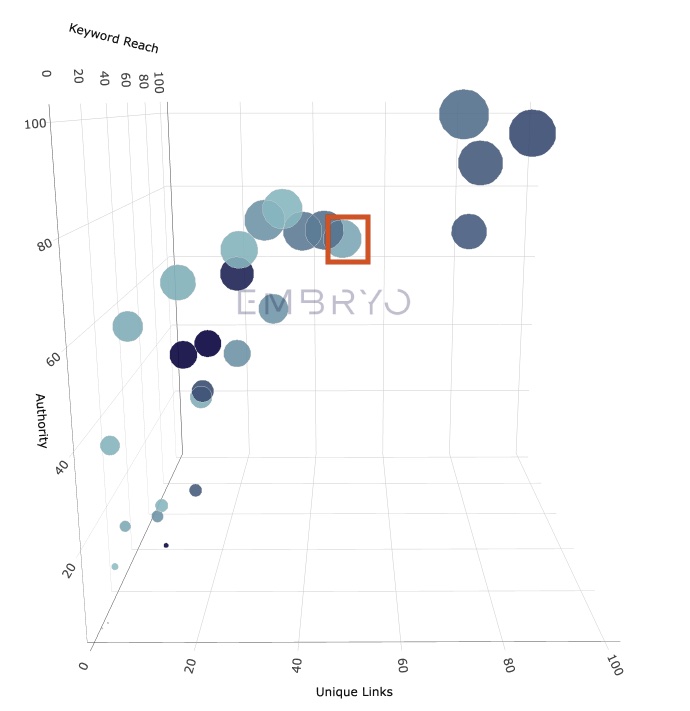
SEO strategies should be based on industry factors – Car Leasing Example

Why don’t most SEOs look at an industry, rather than looking at just one website when creating an SEO strategy?
How can you make decisions for the future of a website without taking factors from those currently leading the industry – and indeed those foraging their own niche within it, too?
At Embryo, we have built our own tool (Needle) that specifically looks at multiple aspects of a collection of sites. AKA an industry, or sector, if you like.
One of the tools within Needle is a 3D graph of how we think that Google views an industry. Using the axes of ‘keyword reach’, ‘unique links’, and website ‘authority’, we are able to plot a much more tangible view of the makeup of a sector than has ever been done before.
We have found that this visualisation helps both non-tech savvy, and those that are tech-savvy to understand what is needed for SEO success in much quicker ways than traditional SEO data/reporting.

It is also helpful that the visualisation is interactive, and the user can pan, tilt, and zoom around the graph to find more information about each node (website).
The 3D graph is just one way for a user to understand an industry. Other reports that help to build a clear picture of what is required for success include ‘search visibility over time’, using the excellent SISTRIX platform data, ‘top pages in the industry’, and ‘common links’.
Just these four reports alone can help to diagnose and create a potent strategy that would help a site to become a real success. Hard work is also required, of course. However, there are another 10+ reports that even with just a brief look at, could produce a winning strategy without any holes.
Let’s take a site from the needle about car leasing – Leasecar – show their current situation, and show what they should do using the data within Needle.
Taking a look at the graph above, from this particular vantage point with keyword reach on the left, and unique links on the right, I know that content on the site needs to be improved. This is because the Leasecar sphere is placed to the right of where these two axis meet. The image below is a zoomed in version of the above.

Sites to the right of where the axis meet almost always don’t have the amount of (quality) content to match their link profile. And because Leasecar has a pretty decent link profile, this makes adding more and better-quality content a very important task to do.
In terms of the number of unique links, Leasecar has the fifth-most links in the sector. However, the four sites leading the way in terms of links lead by some distance. This is because Leasecar has used digital PR very well over the years, which has led to strong, but a limited pool of links.

So with just the information so far, we know that Leasecar needs more and better content to ensure that Google knows that it is one of the leading lights when it comes to the subject of car leasing – and surrounding subjects. And we also know that there is a need for a more diverse range of links.
What is interesting is that we now have probably 90% of the SEO strategy that Leasecar will ever need. And we have taken just a short look at just one of over 40 reports that are contained in the car leasing needle.
Now…think. If I had just looked at Leasecar data in isolation, and not been able to compare it to the other sites in the sector, I would never have known to what extent Leasecar needed to work on both links and content. I would have been making wild guesses.
There is no doubt that as Leasecar adds more and more links from unique websites (and more importantly server IP addresses) that it will climb the authority axis, too. Again, it is already pretty healthy-placed in this regard, but still some distance from the leading few sites.
And as an added extra, when we first started to work with Leasecar, they were much farther over to the right of the 3D graph. This shows that the content has already had an effect. And looking through other data on the car leasing needle, Leasecar is one of only two sites that has gained significantly in visibility over the past six months – almost doubled in fact.




